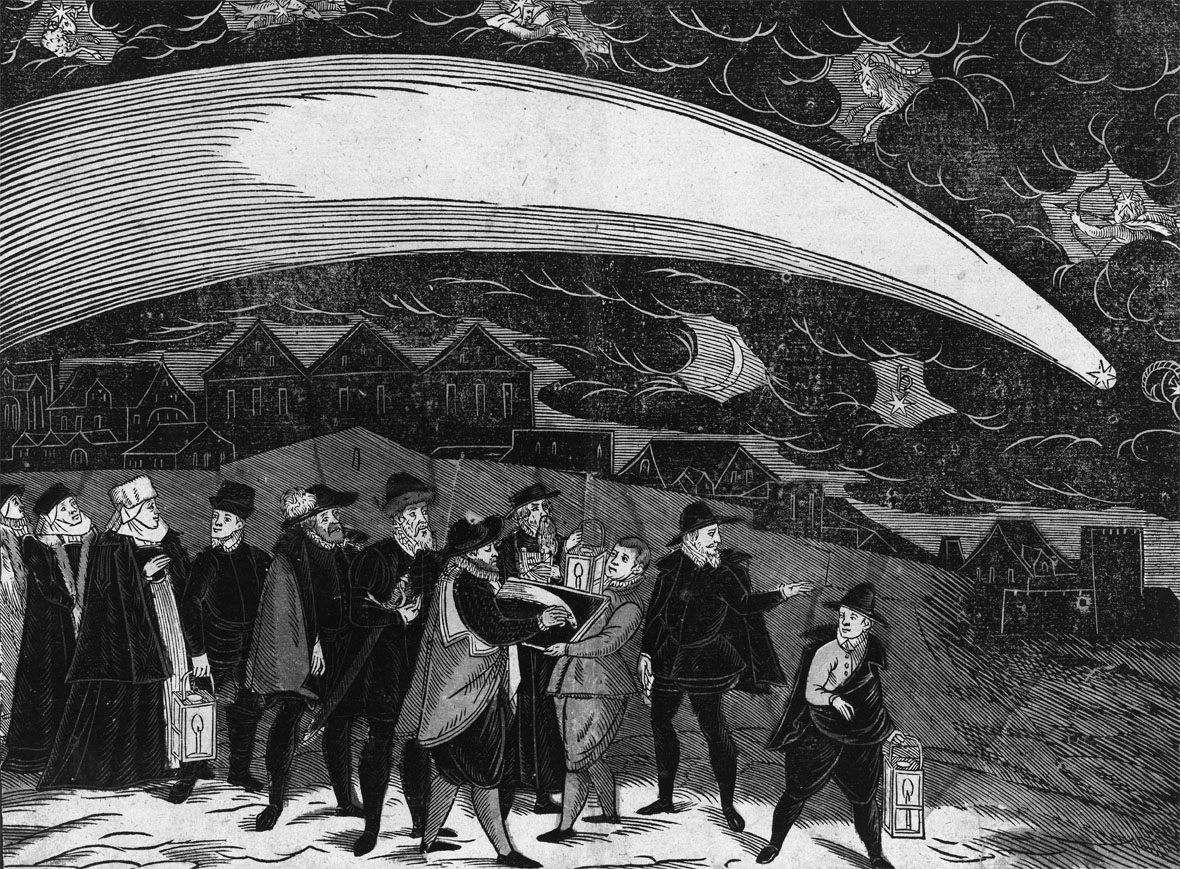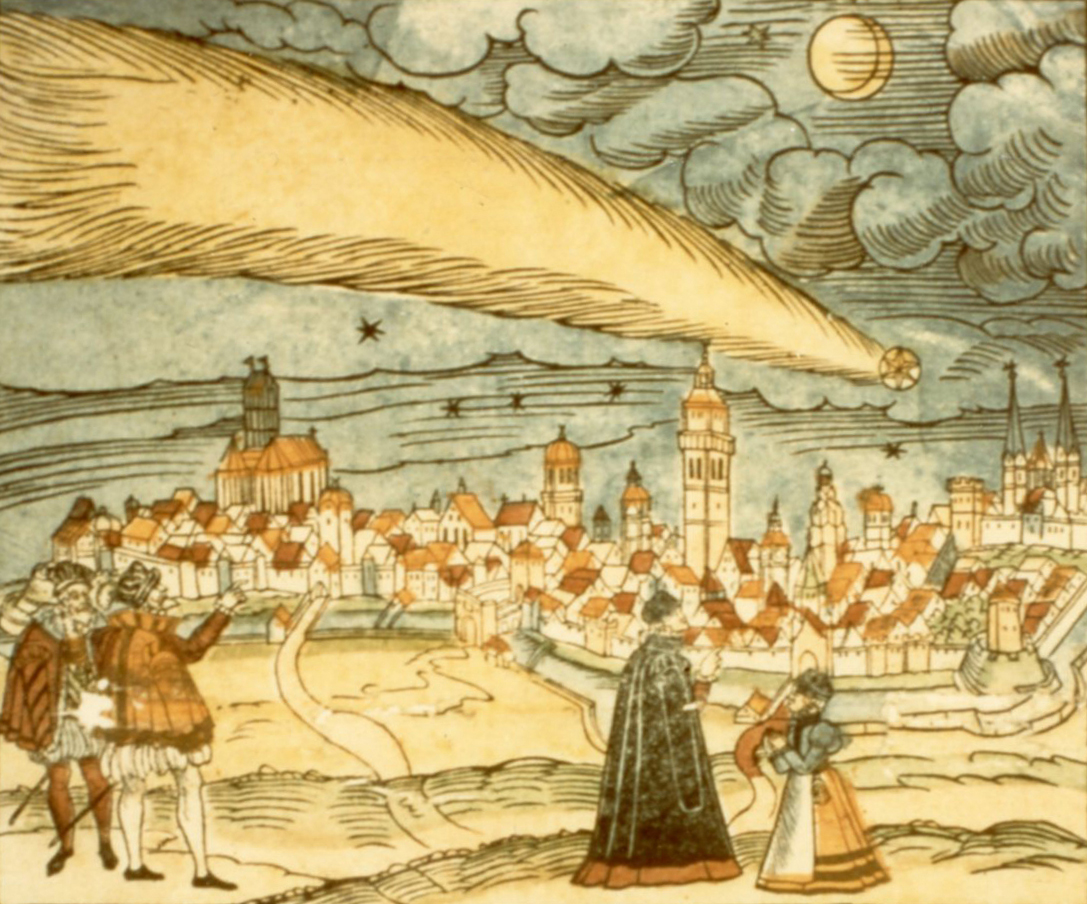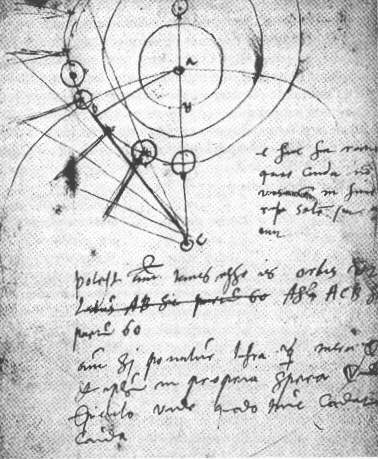
Perihelion: 1577 October 27.45, q = 0.178 AU
In all of astronomical history, one of the names that stand out is that of the 16th Century Danish astronomer Tycho Brahe. Of noble birth, he showed an interest in astronomy at a young age, although his family tried to steer him into a career in statesmanship; however, with his observations and analyses of a brilliant supernova that appeared in Cassiopeia in 1572 – which even now is often informally referred to as “Tycho’s Star”—he acquired an international reputation, and just a few years later King Frederick II of Denmark offered him exclusive usage of the island of Hven for the carrying out of astronomical observations. He was a meticulous observer of, among other things, the positions of the planets – all of this being carried out with his unaided eyes, since this pre-dated the invention of the telescope – however after the death of his patron two decades later Brahe had to relocate, eventually settling in Prague, where he remained until his death in 1601. While in Prague he worked with a younger protégé, Johannes Kepler, who after Brahe’s death utilized his planetary measurements to derive empirically when we now call Kepler’s Three Laws of Planetary Motion. There is a certain irony in this, in that it was Kepler’s Laws that helped firmly establish the heliocentric model of the solar system that had been published in 1543 by the Polish astronomer Nicolaus Copernicus, which Brahe himself had never accepted.
One of Brahe’s most significant contributions to astronomy involved his observations of the brilliant comet that appeared in late 1577, and that is informally named for him, although he was not the first person to see it. It had approached the inner solar system from behind the sun, and after perihelion passage in late October, it was first seen from Peru on November 1, where it was reported as being visible through clouds “like the moon” despite being at an elongation of only 11 degrees. A week later observers in Japan reported it as having a tail over 60 degrees long, with its being as bright as magnitude -3 or -4. Brahe himself first noticed it on the evening of November 13, when he was at one of the fishing ponds on Hven gathering fish for his evening meal and saw its reflection in the water.

The comet had been nearest to Earth (0.63 AU) on November 10, and it remained a brilliant object for quite some time, apparently still being as bright as magnitude 0 in mid-December. It remained visible to the unaided eye until January 26, 1578, by which time its heliocentric distance had increased to 2.6 AU. Brahe was the last person to see it, and he was also the most meticulous observer of the comet, although numerous other observers throughout Europe and the Middle East, among other places, recorded detailed observations of it as well.
When Brahe compared his positional measurements of the comet with those made at the same time by other observers, most notably Thaddaeus Hagecius at Prague, he noticed that the comet did not exhibit any parallax when compared against the background stars. From this, he concluded that the comet must be at least six times farther away than the moon. Up until this time the prevailing thought about comets had been based upon ideas presented by the Greek philosopher Aristotle in the 4th Century B.C., wherein he considered comets as being “exhalations” in the upper atmosphere. The observations by Brahe and the other astronomers of his time demonstrated, on the other hand, that comets are located well beyond Earth and thus are true astronomical phenomena.

While perhaps not in as meticulous or detailed a fashion as Brahe, other astronomers observing the Comet of 1577 were able to reach similar conclusions. One of these, Michael Maestlin in Germany – at one time a pupil of Petrus Apianus (Peter Apian), who had first noticed with Comet 1P/Halley in 1531 that comets’ tails are directed away from the sun – made a crude attempt to determine an orbit for the comet. While Maestlin made the prevailing, and erroneous, assumption that the comet’s orbit was circular – and thus it cannot be considered as an actual reflection of reality – this exercise, along with the demonstrations that the 1577 comet, and thus presumably comets in general, was an astronomical phenomenon of the solar system and not an atmospheric phenomenon of Earth, makes the Comet of 1577 one of the most important scientific comets in history.
More from Week 46:
This Week in History Special Topic Free PDF Download Glossary
Ice and Stone 2020 Home Page


